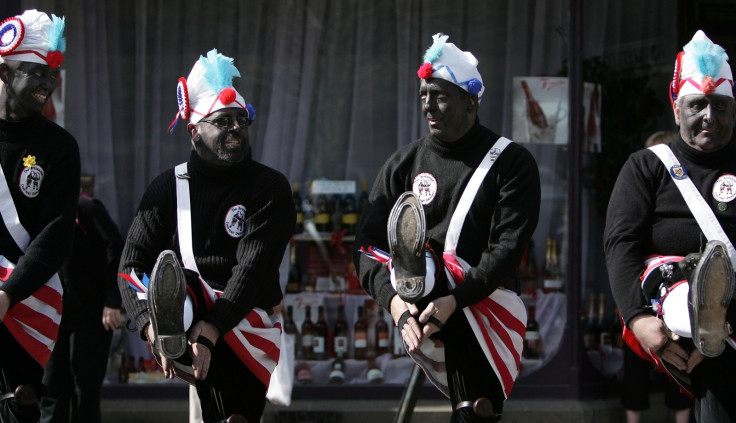Lewes Bonfire society to ditch 'Zulu' face paint: The groups that claim blacking up isn't racist

KEY POINTS
- A 'Zulu dancer' group which takes part in an annual Bonfire parade has promised to stop painting their faces black
- Other groups argue that wearing black face paint isn't racist.
A group whose members were criticised for painting their faces black to resemble "Zulu warriors" for an annual bonfire parade in East Sussex has pledged to end the controversial tradition.
The Lewes Bonfire Society has marched in the streets of Lewes since 1853, as part of the county town's parade – is the biggest celebration of Guy Fawkes' Night in the UK.
The group has been patting on black face paint and wearing horns for it's Zulu-inspired costumes since around the time of the Second World War, according to The Guardian. At the event on Saturday 4 November, the leader of the group cast a "Zulux" black paint into the bonfire – a play on the paint brand Dulux – in a pledge to retire the costumes after consulting a genuine Zulu dancer.
Elsewhere in Europe, controversy surrounding blacking-up remains as groups argue that their traditions trump modern views on racism.
Zwarte Piet

This Dutch character, whose name translates to "Black Pete", is said to be one of Saint Nicholas's Christmas helpers. But with a costume that sees white people painting their faces black, their lips red, and donning curly black wigs and gold earrings, it's clear why the character has sparked controversy.
Many point out that it peddles damaging racial stereotypes of black people as Uncle Tom's Cabin-type "jolly helpers", and is blind to slavery and the Netherlands' colonial past in Africa. Research suggests that it also negatively affects the lives of Dutch minorities. A report by the Dutch children's ombudsman found that young people of colour experience worse discrimination in the Christmas period, which they believe partly stems from people dressing up as Zwarte Piet.

Others – like far-right politician Geert Wilders – believe that Piet predates slavery and is a light-hearted tradition that must be preserved. The situation has become so heated in recent years that in 2015 the United Nations called on the Dutch government to work to "promote the elimination of those features of the character of Black Pete which reflect negative stereotypes and are experienced by many people of African descent as a vestige of slavery".
Morris dancers

Earlier this year, a group of Morris dancers were heckled and accused of being racist as they performed in black face paint outside the Bullring shopping centre in Birmingham to celebrate Plough Monday, the start of the agricultural year. The incident was the latest in an ongoing debate into whether their costumes are racist. There are many theories as to why the dancers of the Border Morris tradition in Worcestershire, Herefordshire, Shropshire and some parts of Wales black up. In 2014, David Cameron was criticised for appearing in a photo with blackfaced Morris dancers.
Some say that the costumes originate from the 16th century, when farmers tried to disguise their faces as they begged for money during winter, as this was illegal. Others say it harks back to soot on miners' faces.
Another suggestion is that the term 'Morris' is derived from Moorish: a word used to describe the dark-skinned mixed Arab, Spanish and Berber members of the Muslim population of what is now Spain and Portugal in the 700s.
Balthazar

In another Christmas tradition, people in Spain daub their faces with black paint to emulate the skin of Balthazar, one of the three Wise Men.
In 2015, the authorities in Madrid ended a forty-year tradition where white actors blacked-up to play Balthazar, by promising to hire black actors to play the role in the annual street parade. In 2014, 60,000 people signed a petition calling on Madrid to axe the practice.
"It is senseless and unnecessary in this day and age for king Balthazar to be a white man painted black," the petition said.






















